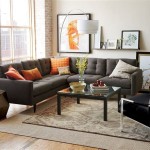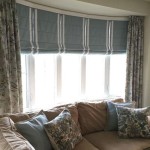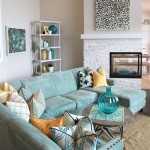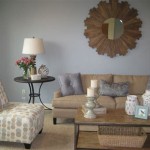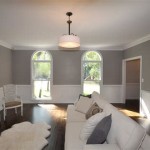Ideas For Living Room Wall Paint
Selecting the ideal paint color for a living room involves contemplating a multitude of factors. The chosen color significantly impacts the room's ambiance, influencing mood, perceived size, and overall aesthetic appeal. Considerations such as natural light availability, furniture style, and personal preferences play crucial roles in arriving at the optimal decision. This article explores diverse paint color ideas for living rooms, encompassing various styles and providing insights into achieving a harmonious and visually pleasing space.
Understanding the Impact of Color Psychology
Color psychology is the study of how colors affect human behavior and feelings. Different colors evoke different emotions, and understanding this can be beneficial when choosing paint colors for a living room. For example, cool colors like blues and greens are often associated with calmness and serenity, making them suitable for creating a relaxing atmosphere. Warmer colors like reds and yellows, on the other hand, can evoke feelings of energy and excitement, which may be appropriate for a more vibrant and social living room.
Consider these common color associations when planning a living room paint scheme:
*Blue:
Represents tranquility, peace, and stability. Lighter shades can create a spacious feel, while darker shades add sophistication. *Green:
Associated with nature, growth, and harmony. It's a versatile color that works well in various living room styles. *Yellow:
Evokes feelings of happiness, optimism, and warmth. Use it sparingly as an accent color, as too much yellow can be overwhelming. *Red:
Represents passion, energy, and excitement. It's a bold color that can add drama to a room, but it should be used cautiously. *Gray:
A neutral color that can be sophisticated, elegant, and versatile. It's a popular choice for modern and minimalist living rooms. *White:
Represents purity, cleanliness, and simplicity. It can make a room feel larger and brighter, but it can also feel sterile if not balanced with other colors and textures. *Beige:
A warm neutral color that creates a cozy and inviting atmosphere. It's a versatile choice that complements various decorating styles.By understanding the psychological impact of different colors, homeowners can make informed decisions about which paint colors will best suit their desired mood and aesthetic for the living room.
Exploring Different Paint Color Palettes and Styles
The choice of paint color should harmonize with the overall style and aesthetic of the living room. Different color palettes are better suited to specific design styles. Exploring different palettes can inspire creative approaches to interior design.
*Neutral Palette:
A neutral palette consisting of whites, grays, beiges, and creams is a classic choice for living rooms. It creates a timeless and sophisticated look that is easy to accessorize and update. Neutral colors provide a blank canvas, allowing furniture, artwork, and textiles to take center stage. This palette is well-suited for minimalist, modern, and traditional living rooms. A popular approach within a neutral palette involves variations of gray, ranging from light, almost white shades, to deeper charcoal tones. Incorporating textural elements can enhance the visual interest of a neutral space. *Warm Palette:
A warm palette features colors like reds, oranges, yellows, and browns. It creates a cozy and inviting atmosphere that is perfect for creating a comfortable and welcoming living room. Warm colors can make a room feel smaller and more intimate. This palette works well in rustic, bohemian, and Mediterranean-style living rooms. The key to implementing a warm palette effectively lies in balancing the intensity of the colors. Pairing a deep, rich brown with lighter, softer shades of yellow or orange can prevent the space from feeling overwhelming. *Cool Palette:
A cool palette consists of blues, greens, and purples. It creates a calming and relaxing atmosphere that is ideal for creating a serene and peaceful living room. Cool colors can make a room feel larger and more spacious. This palette is well-suited for coastal, Scandinavian, and contemporary living rooms. When using a cool palette, consider the undertones of the selected colors. Some blues can lean towards green, while others have a more purple hue. Selecting colors with similar undertones can create a more cohesive and harmonious look. *Monochromatic Palette:
A monochromatic palette uses different shades and tints of a single color to create a cohesive and sophisticated look. This palette can be used with any color, but it works particularly well with neutrals like gray or blue. A monochromatic scheme can create a sense of depth and dimension in a room, while also being visually calming. Layering different textures and materials can further enhance the interest of a monochromatic living room. For example, incorporating a plush velvet sofa, a woven rug, and smooth ceramic accessories can add depth and visual appeal. *Complementary Palette:
A complementary palette uses colors that are opposite each other on the color wheel, such as blue and orange, or red and green. This palette creates a vibrant and dynamic look that is perfect for adding energy and excitement to a living room. When using a complementary palette, it's important to balance the intensity of the colors. One color should be dominant, while the other is used as an accent. This can prevent the room from looking too chaotic or overwhelming.By carefully considering the overall style and aesthetic of the living room, and exploring different paint color palettes, homeowners can create a space that is both visually appealing and personally fulfilling.
The Role of Lighting and Room Size
Lighting and room size are critical variables that influence the perception of wall paint colors. Natural light amplifies the true tones of a color, while artificial light can subtly alter its appearance. Small rooms can benefit from lighter hues that create an illusion of spaciousness, whereas larger rooms can accommodate bolder, darker shades without feeling confined.
Natural Light:
Living rooms with ample natural light can handle a wider range of paint colors. Natural light tends to make colors appear brighter and more vibrant. In such rooms, consider using saturated colors or even darker shades, as they will not appear as intense as they would in a room with less natural light. However, it's important to be mindful of the orientation of the room. South-facing rooms receive warm, direct sunlight, which can intensify warm colors. North-facing rooms receive cooler, indirect light, which can make cool colors appear more muted.Artificial Light:
Artificial light can significantly alter the appearance of paint colors. Incandescent light casts a warm, yellow glow, which can enhance warm colors and dull cool colors. Fluorescent light casts a cool, blue glow, which can enhance cool colors and make warm colors appear flat. LED lighting offers a wider range of color temperatures, allowing for more control over the appearance of paint colors. It's important to test paint colors under the same lighting conditions that will be present in the living room. Paint swatches can be placed on the walls and observed at different times of day, under both natural and artificial light.Room Size:
The size of the living room also plays a crucial role in determining the appropriate paint colors. In small living rooms, lighter colors are generally recommended, as they can create an illusion of spaciousness. Light colors reflect more light, making the room feel brighter and airier. Avoid using dark colors in small rooms, as they can make the space feel cramped and claustrophobic. In larger living rooms, homeowners have more flexibility in their color choices. They can use darker colors to create a cozy and intimate atmosphere, or they can use brighter colors to add energy and excitement to the space. However, it's important to consider the overall proportions of the room. A very large room painted in a very light color can feel cold and impersonal. Conversely, a disproportionately small room painted in a dark color can feel overwhelming.Ceiling Height:
Ceiling height is another factor to consider. Low ceilings can make a room feel confined. Painting the ceiling a lighter color than the walls can help to create the illusion of height. Conversely, high ceilings can make a room feel cavernous. Painting the ceiling a darker color than the walls can help to lower the visual height of the room and create a more intimate atmosphere.By carefully considering the amount of natural light, the type of artificial lighting, the size of the room, and the height of the ceiling, homeowners can select paint colors that will enhance the overall appearance and feel of their living room.
Considering Undertones and Color Consistency
Undertones refer to the subtle hues that are present beneath the surface of a color. These undertones can significantly affect how a color appears in different lighting conditions and in combination with other colors. Ignoring undertones can lead to unexpected and undesirable results. Colors that might appear neutral on a paint chip can reveal subtle undertones of pink, yellow, green, or blue when applied to a larger surface. These undertones can clash with existing furniture, flooring, or artwork, creating a discordant and unharmonious effect. To avoid this, it's essential to carefully examine paint swatches in different lighting conditions and compare them to other elements in the room.
To determine the undertone of a color, compare it to a true neutral, such as a pure white or a true gray. Place the paint swatch next to the neutral and observe any subtle hues that emerge. For example, a gray paint color might have a subtle blue undertone, while another gray paint color might have a subtle green undertone. Understanding these undertones can help homeowners choose colors that complement each other and create a cohesive and harmonious color scheme.
Color consistency is another important factor to consider. Variations in paint batches can lead to subtle differences in color. These variations can be particularly noticeable when painting large areas or when touching up previously painted surfaces. To ensure color consistency, it's essential to purchase all the paint needed for a project at the same time. This ensures that all the paint comes from the same batch. If it's necessary to purchase additional paint later, be sure to check the batch number and request paint from the same batch. When touching up paint, it's also important to use the same type of paint and the same application technique as the original paint job. This will help to minimize any noticeable differences in color or texture.
Before committing to a paint color, it's always a good idea to test it on a small, inconspicuous area of the wall. This allows homeowners to see how the color looks in different lighting conditions and to assess whether it complements the other elements in the room. Applying two coats of paint is necessary for an accurate representation of the final color. Observing the painted area at different times of day and under different lighting conditions can help homeowners make an informed decision about whether the color is right for their living room.
Incorporating Accent Walls and Trim Colors
Accent walls can provide a focal point in a living room, adding visual interest and depth to the space. An accent wall typically features a different color or texture than the other walls in the room. It can be used to highlight a particular architectural feature, such as a fireplace or a window, or to create a sense of drama and excitement. When choosing a color for an accent wall, consider the overall color scheme of the room and the desired mood. A bold, saturated color can create a dramatic statement, while a more muted color can add subtle visual interest.
Trim colors also play an important role in the overall aesthetic of a living room. Trim includes elements such as baseboards, crown molding, door frames, and window casings. The color of the trim can either complement or contrast with the wall color, depending on the desired effect. White trim is a classic choice that works well with a wide range of wall colors. It creates a clean and crisp look that is both timeless and versatile. However, homeowners can also experiment with other trim colors, such as grays, beiges, or even bolder colors that complement the overall color scheme of the room.
When choosing trim colors, consider the style of the living room. In traditional living rooms, trim is often painted in a glossy white or cream color. In modern living rooms, trim may be painted in a matte gray or black color. In coastal living rooms, trim may be painted in a light blue or green color. The key is to choose a trim color that complements the overall style of the room and enhances its aesthetic appeal.
The finish of the paint is also an important consideration. Different paint finishes have different levels of sheen, which affects how they reflect light. Matte finishes have very little sheen and are ideal for hiding imperfections on walls. Eggshell finishes have a slightly higher sheen and are more durable than matte finishes. Satin finishes have a moderate sheen and are easy to clean, making them a good choice for high-traffic areas. Semi-gloss finishes have a high sheen and are very durable, making them a good choice for trim and doors. High-gloss finishes have the highest sheen and are the most durable, but they can also highlight imperfections on walls. Choose the paint finish that is most appropriate for the specific application and the desired aesthetic.

7 Charming Wall Painting Ideas For Living Room

45 Creative Wall Paint Ideas And Designs Renoguide N Renovation Inspiration

10 Wall Colour Paint Ideas To Make Your Living Room More Pleasant

Best Living Room Paint Ideas Revamp Your Space Jones Asset

3 Unique Painting Ideas For Your Living Room Gleco Paints Blog

Living Room Paint Ideas To Spruce Up Your Home Designcafe

1001 Living Room Paint Color Ideas To Freshen Up Your Interior

50 Best Living Room Paint Ideas Colors

35 Best Paint Colors For Living Rooms

Revamp Your Living Room With Mesmerizing Wall Paint Designs Indigo Paints


